As the Supreme Court prepares to issue decisions in two cases challenging affirmative action, a flurry of articles, podcasts, and op-eds have looked back at the Ivy League’s history of excluding Jews. Less attention has been paid, however, to what Jewish life in the Ivies looks like now, and what it tells us about the Jewish future—on campus and off.
How could a party without music be so loud?
When Harvard College reopened its campus in the fall of 2021, Abe Atwood discovered that his neighborhood had gotten livelier. On Friday nights, he watched from the window of his dorm room in Mather House as people streamed toward two brightly lit tents nearby. The sound of talking and laughter emanating from inside them could be heard down the block.
Atwood had dropped in at Chabad events before Covid sent him home to Washington, D.C., but these alfresco dinners in February were something different: “It’s a very, very warm atmosphere. And it gets more animated after the meal. You’ll see people sitting there talking, singing, debating, cracking jokes about whatever. It’s always packed.”
And the crowd was diverse: undergrads rubbed shoulders with professors; graduate students chatted with people from the Cambridge community. The legal scholar and journalist Noah Feldman dropped in one week, the economist Paul Gompers another. At one of the first dinners Abe attended, Harvard Chabad’s founder and president, Rabbi Hirschy Zarchi, introduced him to teaching fellow Berel Feldman, and the two bonded over a shared interest in moral philosophy and the Real Madrid soccer club. They started getting together weekly to study Torah, chat, and watch soccer.
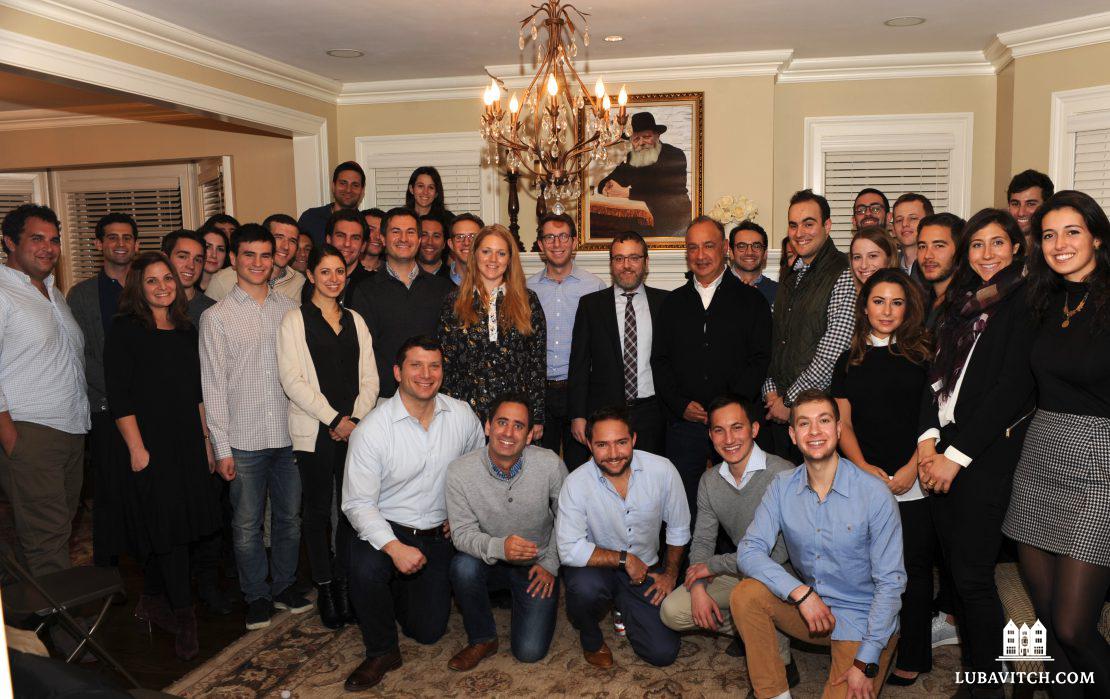
One friendship led to another. “There are people I know [through Chabad] who I would not have met in any other setting,” Atwood says. Though he knew nothing about the movement before coming to college, by the time his sophomore year ended, Chabad had become an essential part of his life at Harvard: “I have a community that I identify with.”
I asked him whether he could tell that the Jewish student body at Harvard had shrunk by 75 percent in the last twenty years. “Nah,” he said. “You’d never know it.”
Watching the Numbers
After shutting out Jews in the early twentieth century, Ivy League universities dropped their official quotas in the 1950s (and their unofficial ones in the ’60s). In subsequent years, campuses became increasingly Jewish. In 1967, the Jewish Telegraphic Agency reported that Harvard’s student body was 25 percent Jewish. In the early 1980s, the number at Princeton University, once famous as a bastion of waspy antisemitism, was 18 percent.
But, in the past two decades, Jewish student populations in these prestigious schools have fallen dramatically. In 2020, when the Harvard Crimson published a survey of the incoming freshman class that included a question about religion, 6 percent of the students surveyed checked the box labeled “Jewish.”
Observant Jews have not disappeared from the Ivy League; they have migrated, and in a surprising direction. Princeton University maintained a 3 percent quota for Jews in the early 1900s. . . . It is perhaps the last place in the Ivies one would expect to find a thriving Orthodox community.
The reasons for the drop in Jewish numbers are varied and complex. Exponentially larger applicant pools, which include many international students, and an increased focus on campus diversity have played a role: “Penn has made a tremendous effort to increase the number of what they call FGLIs—first generation to attend college in low-income families” a Jewish leader at the school told me. “That’s not many Jewish people these days.” Some have also pointed to a waning of Jewish ambition, as each generation is further removed from the immigration cycle. But perhaps the most salient factor, and the most troubling, is that fewer and fewer young people are identifying themselves as Jews.
The decline has become a source of concern for Jewish organizations. “The active community on campus speaks about it with frustration,” Rabbi Zarchi says. “But Chabad has not experienced a drop. From our perspective, Jewish life has never been more vibrant.” Like Rabbi Zarchi, who arrived at Harvard twenty-five years ago, the Chabad reps at Princeton and Penn have been on campus long enough to observe the decline—and adapt to it. Working within their schools’ unique culture and history, they have deepened their engagement, redefined relationships with other campus organizations, and reached out, even further, in the effort to build communities that will nurture the next generation of Jewish leaders.
Where the Jews Were
When Stan Geiger arrived at Harvard College in the late 1980s, he encountered a group of people he had heard about but never met: Orthodox Jews. “There were ten to fifteen of them in every class,” recalls Geiger, who asked that his real name not be used, “and at least as many graduate students.” Intrigued, he started frequenting Rosovsky Hall, Harvard’s Hillel building, where they congregated for prayer—two hundred people attended Shabbat morning services in those days, he says—and kosher meals.
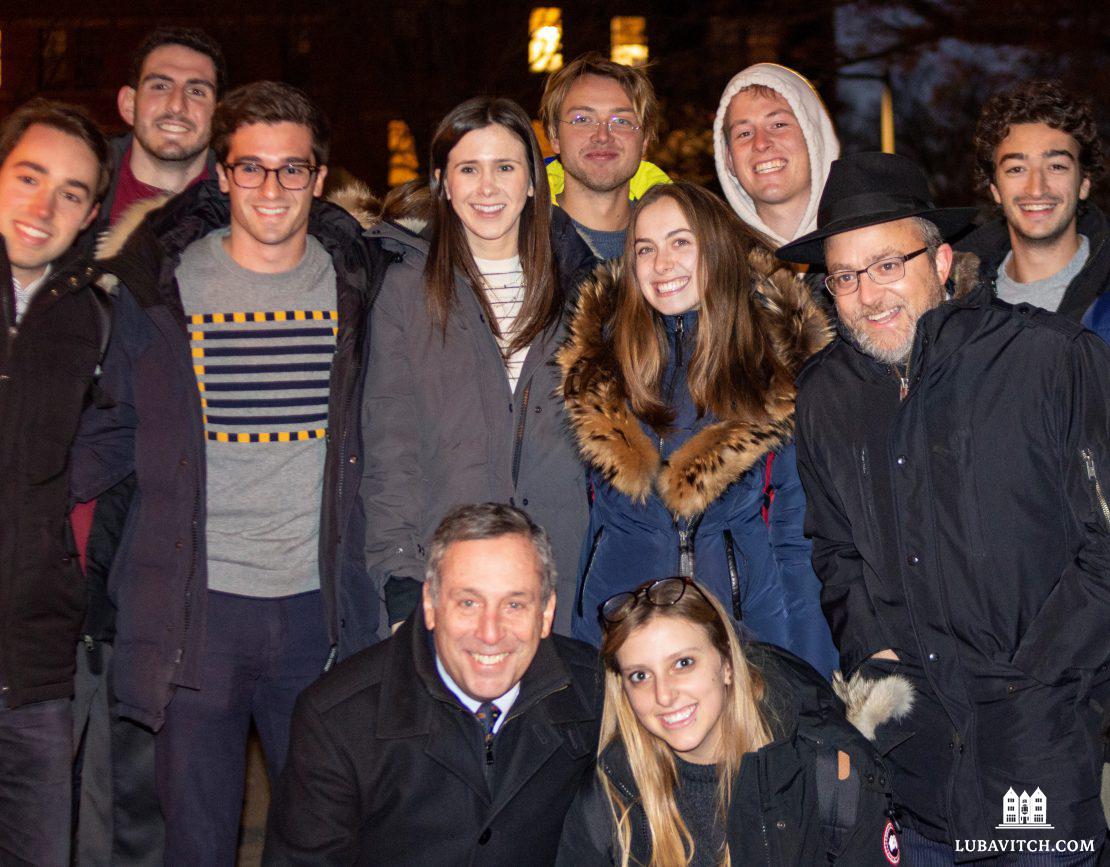
When the Zarchis arrived in 1997, they saw the same thing, and opted to focus their work on graduate students, who were generally less well served by Hillel’s programming. Sue Fishkoff’s 2003 book, The Rebbe’s Army, depicted the young couple hosting intimate, crystal-and-china Shabbat dinners for twenty graduate students.
But at some point, says Elkie Zarchi, they sensed a change. Undergraduates started appearing at their Shabbat table, bringing a new attitude with them. “People would say to me, ‘I’m not Jewish, but my grandma is,’” she recalls. “We weren’t battling negative experiences. We were battling no experiences.”
For these students, the warm, open atmosphere at Chabad was a welcome contrast to the formality that permeates much of life at Harvard. Ruth Wisse, professor emerita of Yiddish literature and comparative literature, told me: “The rest of us were running Jewish programs. The Zarchis were sharing a family meal.”
Even as the official number of Jews at Harvard was dropping, the Zarchis were putting out more and more place settings. “I don’t think the kids are scared to identify as Jews,” Rebbetzin Zarchi says. “It just doesn’t occur to them. It’s not the life they’re living.”
Harvard was among the first universities to close their campus in early 2020, but the Zarchis stayed put, moved all their operations outside, and became a center of activity for Jewish students who chose to remain in Cambridge.
Geiger, who went on to earn both an MBA and a law degree from Harvard, stayed long enough to meet the Zarchis, whom he found “captivating.” He has kept a close watch on the state of Jewish life at his alma mater. “We’re one generation more assimilated,” he says. “The people who I went to school with—their kids are not finding their way to Hillel.” His daughter, a current sophomore at Harvard College, serves as a supervisor in Hillel’s kosher kitchen, largely because no one else is interested in the job. “These days,” he says, “it’s all hands on deck.”
Harvard was among the first universities to close their campus in early 2020, but the Zarchis stayed put, moved all their operations outside, and became a center of activity for Jewish students who chose to remain in Cambridge. This November, they received a $5 million donation from Jackie and Omri Dahan, an alumnus of Harvard Business School, to endow Rabbi Zarchi’s chair at Harvard Chabad and to establish a student fellowship that fosters Jewish leadership.
Their Shabbat dinners—which draw around two hundred students each week—are now too big to move back indoors.
A Taste of Home
Observant Jews have not disappeared from the Ivy League; they have migrated, and in a surprising direction. Princeton University maintained a 3 percent quota for Jews in the early 1900s. Its selective eating clubs, famously depicted in F. Scott Fitzgerald’s This Side of Paradise, were rejecting many Jews as “socially unsuitable” as late as 1958. It is perhaps the last place in the Ivies one would expect to find a thriving Orthodox community.
“Jewish life at Princeton has gotten more religious over the past decade,” Princeton Chabad director Rabbi Eitan Webb says. In large part, the community is a product of Princeton’s checkered past with Jews. In the 1970s and ’80s, Princeton President William G. Bowen made a concerted effort to attract day school students who had been put off by the school’s reputation. Princeton experienced the same decline in numbers as the other Ivies—its Jewish population now hovers around 8 percent—yet the community that Bowen recruited remains.

Reputations reinforce themselves, and Princeton became a place that attracts students like Nicole Klausner, a junior from Los Angeles majoring in computer science. “I chose to come to Princeton because the Jewish life was stronger than at other Ivy schools,” she says, “and the academics really drew me.”
Building community in this kind of environment is a collaborative process. Princeton’s Center for Jewish Life (also established by Bowen) hosts the school’s kosher cafeteria, offers three prayer services a day, and serves as a social space for students. “We have a class at Chabad where a dozen students learn Gemara with advanced commentaries every week,” Rabbi Webb says. “The Hillel serves breakfast, lunch, and dinner. They’re doing great work.”
What Chabad provides, Klausner told me, is a taste of home. During her freshman year, when classes were remote and Hillel was limiting its indoor dining options, the Webbs set up a tent and welcomed her for Friday night dinner. “They’ve been instrumental for me in my adjustment,” she says. Now the president of Chabad’s student group, she has also served on Hillel’s board. One organization she chose not to join, however, was an eating club: “I just didn’t feel like I was missing anything.”
Evolving Social Spaces
Social organizations can be a powerful tool for forming identity. Penn was once considered the most Jewish of all the Ivies (perhaps as much as 30 percent), and it has fostered a robust Greek life that reflects its students’ interests—or lack thereof. When Rabbi Menachem Schmidt arrived at the University of Pennsylvania in 1980, he got a less than enthusiastic reception from the university’s largest Jewish fraternity, Zeta Beta Tau: “When we showed up at ZBT, they would say hello for a minute and then throw us out of the building,” he recalls.
Rabbi Schmidt persevered. Julie Blinbaum remembers attending parties at ZBT during the early aughts that happened to fall on Simchat Torah: “Suddenly you would see the Torah brought in. I wasn’t sure what was going to happen the first time I saw that, but people just turned and embraced it and started dancing.” The rabbi also started a student-run organization, the Jewish Heritage Program. In addition to doing community service projects and organizing social events, the program connects students to a powerful network of alumni like Blinbaum, who is now a senior director at AIPAC.
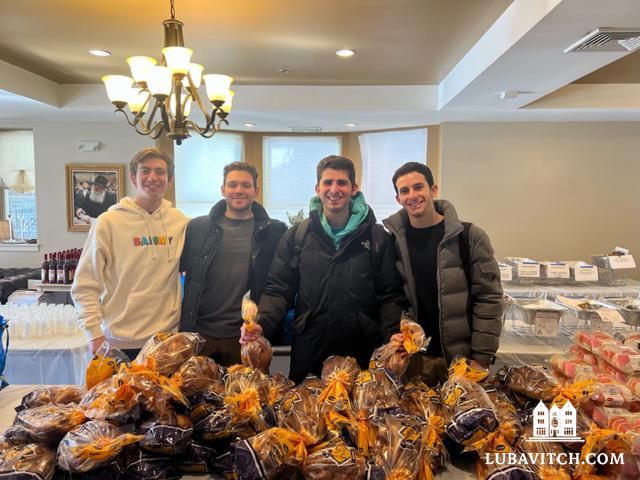
It was only when the number of Jews began declining that it became clear how integral Lubavitch House at Penn, which now employs three couples full time, had become to the university’s Jewish life. Junior Evan Golinsky served as the president of ZBT for the 2021-22 school year. He told me the frat has far fewer Jewish members than it used to. “My friends and I have taken it upon ourselves to ensure a strong connection between Chabad and ZBT,” he says. “We’re keeping Jewish life alive at the fraternity.”
Golinsky also brings ZBT’s non-Jewish members to Lubavitch House to “expand their minds,” and that’s a role the Chabad reps embrace. In 2017, spurred by a spate of suicides at the school, Lubavitch House director Rabbi Ephraim Levin collaborated with a Penn psychiatrist to develop a protocol that would train individual students—and student groups—to better support one another through active listening. The non-sectarian program, Listen Up Cogwell, has trained over a thousand students at Penn, and is now being adopted on other campuses across the country.
After more than four decades at Penn, Schmidt is far from sanguine about the future of Jewish life at the school. He says Covid created a sea change in the student body’s sense of commitment outside of schoolwork: “Social obligations don’t weigh like they did before.” And campus life is cyclical. “Just because you had three hundred people for Shabbat dinner last year, you can’t assume you’ll have them again. We’re not complacent.”
Deepening the Connection
This past December, AMCHA, an organization that tracks antisemitism on campus, released a report that described a “looming crisis for the American Jewish community.” In incidents on campuses across the country, Jewish identity was suppressed, denigrated, and redefined, the researchers found. The school at the top of the list, with the most reported incidents, was Harvard.
As a barometer for achievement and acceptance in American society, the number of Jewish students in the Ivy League has been a subject of fascination for more than a century. But in the context of the AMCHA study and broader trends in American Jewry, the current decline points to a truth far more disturbing than admission quotas or a loss of immigrant ambition: the next generation of America’s Jewish leaders may not even think of themselves as Jews.
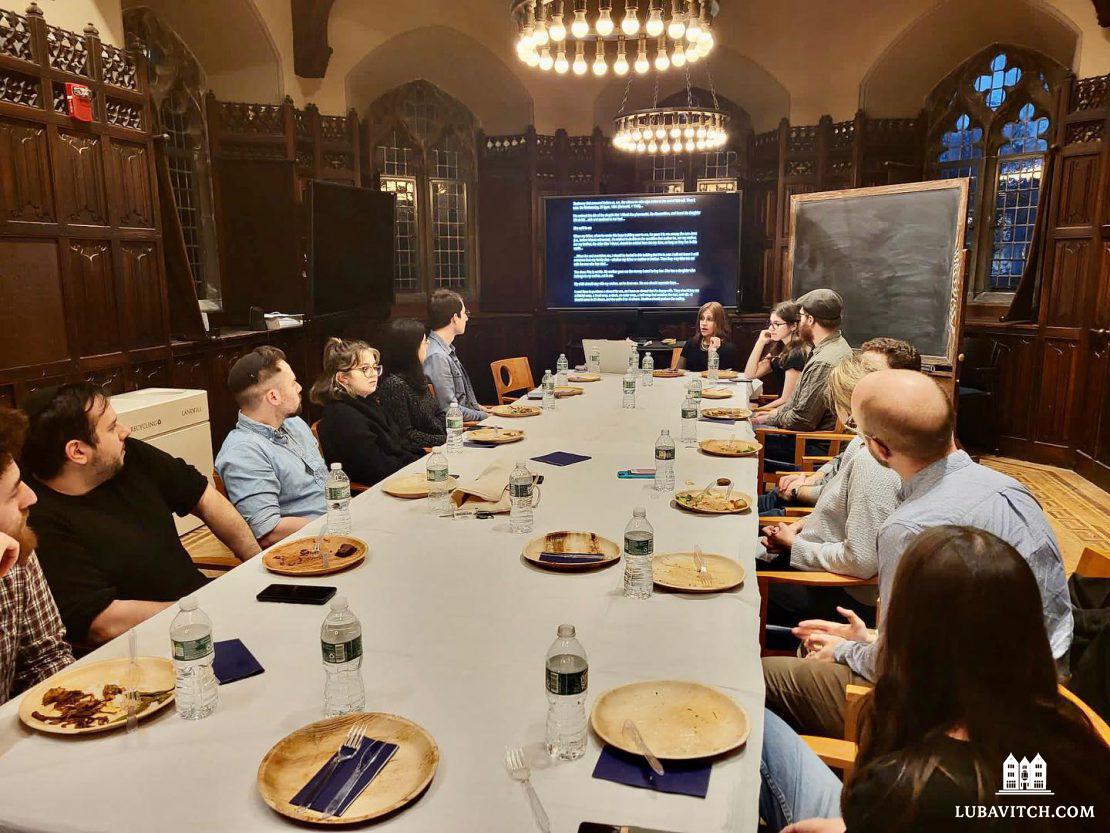
Questions of identity have been at the forefront of Abe Atwood’s mind lately. Six months after he met Berel Feldman, Atwood decided to join a new program at Chabad that offered bar and bat mitzvah celebrations to students who did not have one. Feldman taught him how to read Hebrew so that he could recite the blessings over the Torah; Atwood’s friend, who had attended a Jewish school, volunteered to recite the Torah portion for him; Atwood’s younger brother, a sophomore at Harvard, decided to join the ceremony. The Zarchis raised money to purchase a set of tefillin, organized a dinner, and hired a photographer.
“It was like a Vegas bar mitzvah,” Atwood says, laughing. “But then all my friends showed up, and I was proud. I felt more connected to my Jewish identity than I did before.”
This article appeared in the Spring-Summer 2023 issue of the Lubavitch International magazine. To download the full magazine and to gain access to previous issues please click here.
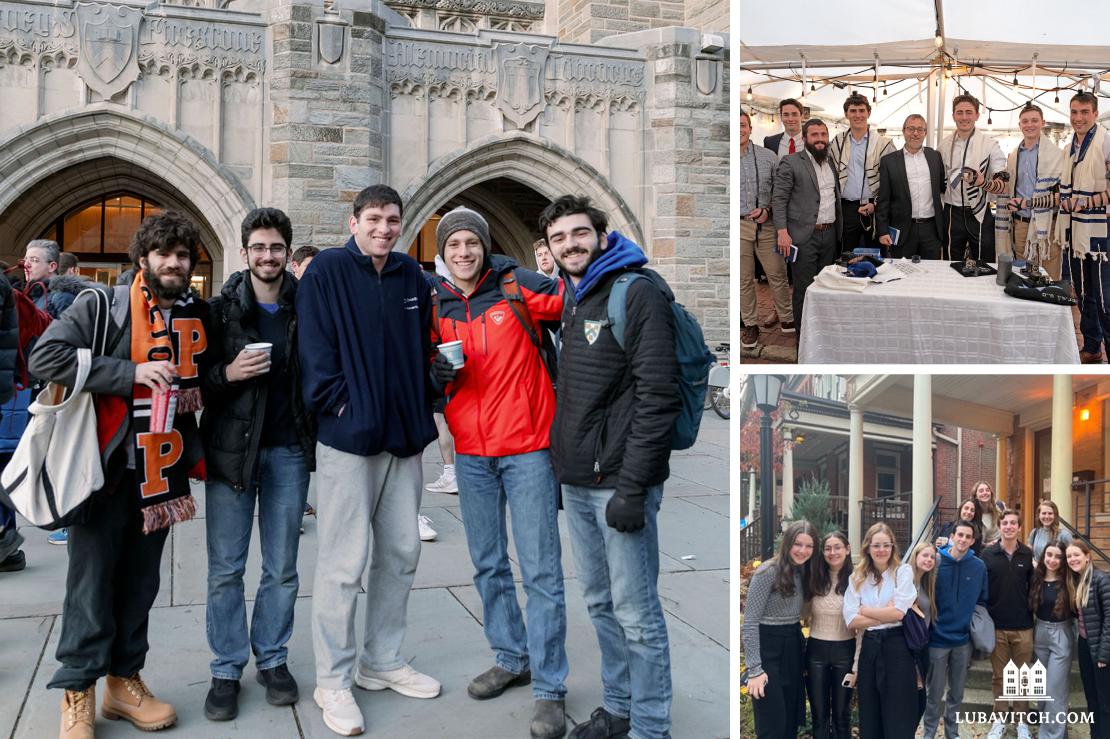
Be the first to write a comment.